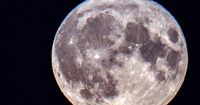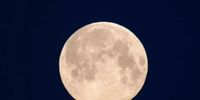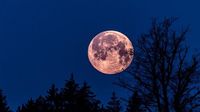The full moon in April, known as the "Pink Moon," will grace the night sky on April 13, 2025, but it won't actually appear pink. This moon, which is also referred to as the Easter Moon, holds significant cultural and astronomical importance, particularly for those observing Easter traditions.
In recent weeks, the moon has captured public attention, first during a lunar eclipse and then during a partial solar eclipse. Now, as the full moon approaches, it is set to shine in the sky, albeit smaller than usual due to its distance from Earth. On this date, the moon will be located approximately 406,295 kilometers away, which classifies it as a "Minimond"—a term used to describe a full moon that is at its farthest point from Earth, known as apogee.
Despite its name, the "Pink Moon" does not glow in a rosy hue. Instead, the title derives from the blooming of the Phlox flower, a springtime plant that inspired North American indigenous tribes to name the April full moon after it. Astrophysicist Björn Voss, director of the Planetarium in Hamburg, emphasizes the joy this moon brings, stating, "Even if we are deprived of a colorful light display, this first spring full moon is still a reason for celebration."
The significance of the Pink Moon extends beyond its visual appeal. For those of Christian faith, it marks the beginning of the Easter season. Easter Sunday is traditionally celebrated on the first Sunday following the first spring full moon after the vernal equinox, which usually occurs around March 20 or 21. Voss explains, "If we consider the regular cycle of the moon around the Earth, numerous dates between March 21 and April 19 are possible for the first spring full moon. Consequently, there is a wide range for the date of Easter, which can be as early as March 22 and as late as April 25, resulting in 35 different possible dates for the holiday." In 2025, Easter Sunday will fall on April 20, with Pentecost celebrated 49 days later on June 8.
As the Pink Moon rises, it is important to note that both "Supermoon" and "Minimond" have implications for Earth's tides. A full moon at apogee exerts less gravitational pull, leading to weaker tidal forces and lower high tides. The April Minimond is also known by other names, such as Grasmond (Grass Moon), Eimond (Egg Moon), and Fischmond (Fish Moon), reflecting its ties to agriculture and seasonal changes.
On the night of April 13, skywatchers can expect clear viewing conditions, with the full moon reaching its peak at 1:22 AM Central European Summer Time (MESZ). It will be visible for several days before and after this date, allowing ample opportunity for enthusiasts to appreciate its presence.
In summary, the Pink Moon on April 13, 2025, is not just a celestial event; it embodies a blend of natural beauty and cultural significance. As it illuminates the night sky, it invites observers to reflect on the changing seasons and the traditions that intertwine with the lunar cycle. Whether one is celebrating Easter or simply enjoying the sight of the moon, this event promises to be a memorable highlight of the spring sky.








